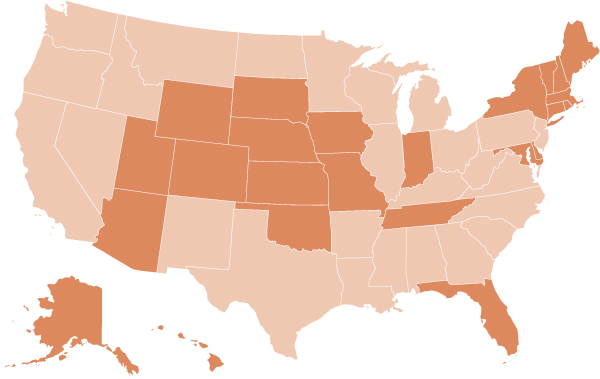Nationwide, selection of appellate judges typically occurs in one of three ways: contested election, political appointment, or merit selection. The “Missouri Plan,” as merit selection is sometimes referred to, first emerged in 1940 when prominent Missouri citizens1 sought to change the way their judges were selected because of perceived abuses/weaknesses with the other means of selection. Id.
Their proposal was the Missouri Nonpartisan Court Plan, which set forth the following key elements: 1) creation of a judicial commission that would be responsible for soliciting and considering applications for any judicial vacancy and then nominating from that pool three highly qualified candidates for the Governor’s consideration; 2) Governor then would be charged with selecting one of the nominees to fill the vacancy; and 3) after a one or two-year “probationary” period, the public then would vote in a retention election whether the judge would be retained for a full term. Id. at 725.
Despite the Missouri legislature’s failure to put a nonpartisan judicial selection system on the ballot through the referendum process, there was such strong support for change in judicial selection that proponents of the Missouri Plan collected signatures throughout the state in order to get the Plan on the ballot by initiative petition. Id. at 723. Missouri voters adopted the Plan in November 1940 and successfully defended it afterwards at balloting, despite various legislative attempts to undermine the addition of the Missouri Plan to the state constitution. Id.
Currently, thirteen states2 including Indiana employ “Missouri Plan” merit selection processes for choosing appellate judges. Nine other states employ merit selection systems with some variations3 (i.e. requiring senate confirmation of a governor’s selection). The Indiana Constitution was amended in 1970 to create the Indiana Judicial Nominating Commission, but the amendment did not take effect until January 1, 1972. Indiana is the only state where the judicial nominating commission selects the chief justice.

Indiana’s Merit Selection Process
Under the Indiana Constitution and applicable statutes, the Nominating Commission is charged with vetting applications and submitting a list of the three most qualified applicants to the Governor for each vacancy that occurs on the Supreme Court, Court of Appeals, or Tax Court. Typically, the Nominating Commission accomplishes the task by publicly announcing the vacancy and soliciting applications for the position. After selecting applicants for further consideration, the Commission conducts background checks, publicly interviews the selected candidates (usually in two separate rounds), and deliberates in executive session about the candidates’ qualifications.
Once the Commission finishes deliberating, the members vote in a public session for the top three nominees and later (usually within a week to ten days) submits a report to the Governor with a summary of the three nominees’ qualifications. From the time the Governor receives the report, he or she then has sixty days to appoint an individual from that list to fill the vacancy.
If the Governor does not make a selection within sixty days, then, according to Indiana Code § 33-27-3-4 and Indiana Constitution, Article 7, Section 10, the Chief Justice of Indiana or acting Chief Justice is required to make a selection from the list of three nominees. Since the creation of the Nominating Commission, no Governor has forfeited his power to appoint a justice of the Indiana Supreme Court.
Related Article: Choosing a New Chief
1 One of the Plan’s key supporters was Rush Limbaugh Sr., the grandfather of former Missouri Supreme Court Judge Stephen N. Limbaugh, Jr., and cousin of political commentator Rush Limbaugh. See Laura Denvir Stith and Jeremy Root, The Missouri Nonpartisan Court Plan: The Least Political Method of Selecting High Quality Judges, 74 Miss. Law Rev. 711, 723 (2009).
2 Besides Indiana, the other states which choose judges by “Missouri Plan” merit selection are Alaska, Arizona, Colorado, Florida, Iowa, Kansas, Missouri, Oklahoma, Nebraska, South Dakota, Tennessee, and Wyoming. See American Judicature Society Website, “Judicial Selection in the States—Methods of Judicial Selection” at www.judicialselection.us.
3 Delaware, Hawaii, Maryland, New York, Rhode Island, Utah, and Vermont require senate consent or confirmation of a governor’s selection after a recommendation from a nominating commission. In Connecticut and New Hampshire, the governor makes a judicial nomination after a recommendation from the nominating commission but either the legislature (Connecticut) or an executive council (New Hampshire) make the actual appointment. Id.